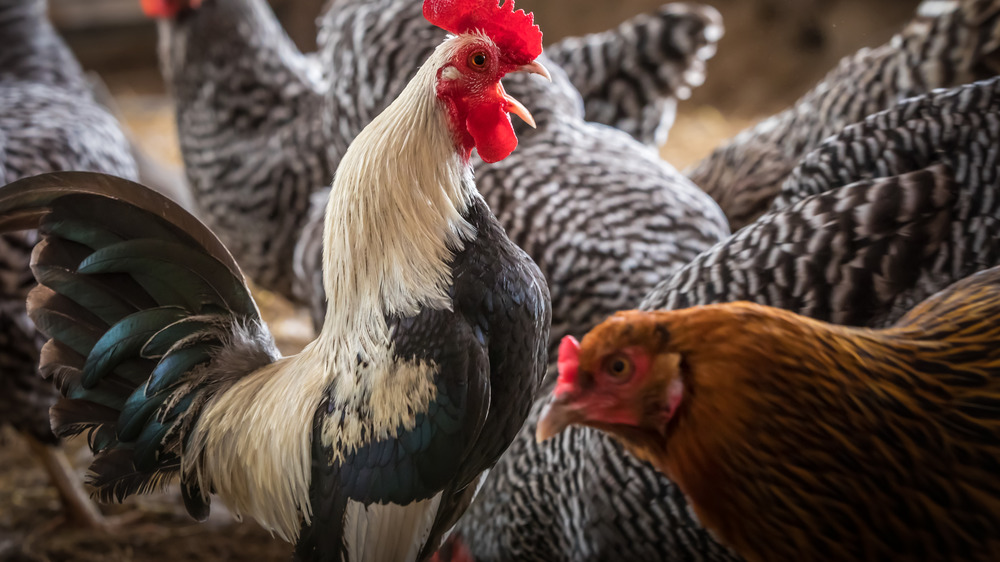How Andrew Zimmern Really Feels About Cage-Free Chicken Laws
March 17, 2021, was a big day for proponents of cage-free eggs. Utah, as per Food Safety News, became the eighth state to enact a law that will ensure that chickens laying eggs within its borders aren't confined to cages. Of course, when it comes to cage-free mandates, state legislatures are leagues behind corporations. Costco and Aldi have already committed to cage-free futures. And, according to Watt Poultry, restaurants such as Whataburger, Papa John's, Shake Shack, Wendy's, Starbucks, and Panera, among others, have also already made cage-free egg pledges. Heck, even Chick-fil-A is on board.
Yup. There's a reason for that. And it's not necessarily because the food industry is eager to do the right thing. As Food Network's Andrew Zimmern recently tweeted, Utah's cage-free law "is chicken sh*t and doesn't address the problem! People need to know how the industry works." Because, despite its glitzy name, there's no guarantee that a chicken who lays a cage-free egg isn't beaten, sick, or otherwise doomed to a life lived in miserable conditions.
Why Andrew Zimmern doesn't think we should celebrate cage-free regulations
Assume for a moment that chickens should be guaranteed the same basic tenets as human beings: life, liberty, and the pursuit of happiness. Cage-free chickens, similar to those in battery cages, are denied all three. Let's start with the idea of space (liberty to move). In his outrage over Utah's new cage-free law, Andrew Zimmern urged his followers to read an article from The New Republic that outlines these issues.
Its author points out that cage-free systems don't necessarily guarantee enough space for chickens to spread their wings. Because cage-free chickens often move around in tight, dirty spaces, they spread germs more easily, making them highly susceptible to illnesses, says The New York Times. Little wonder that pecking in such hellish conditions can sometimes become, as per The New York Times, "cannibalistic." It only follows that research (like the 2015 study quoted in The Washington Post) has found that cage-free birds can suffer from eye-raising mortality rates.
Finally, there's the fact that cage-free or not, as The New Republic points out, most egg farms still cull (i.e. kill off) their male chickens, who provide little commercial use for them. According to the publication, about 7 million male chicks are slaughtered by the egg industry each year.
Utah, and seven other states may have passed cage-free laws. But the regulations don't mean much if the goal is trying to achieve more humane conditions for chickens in the egg industry.

